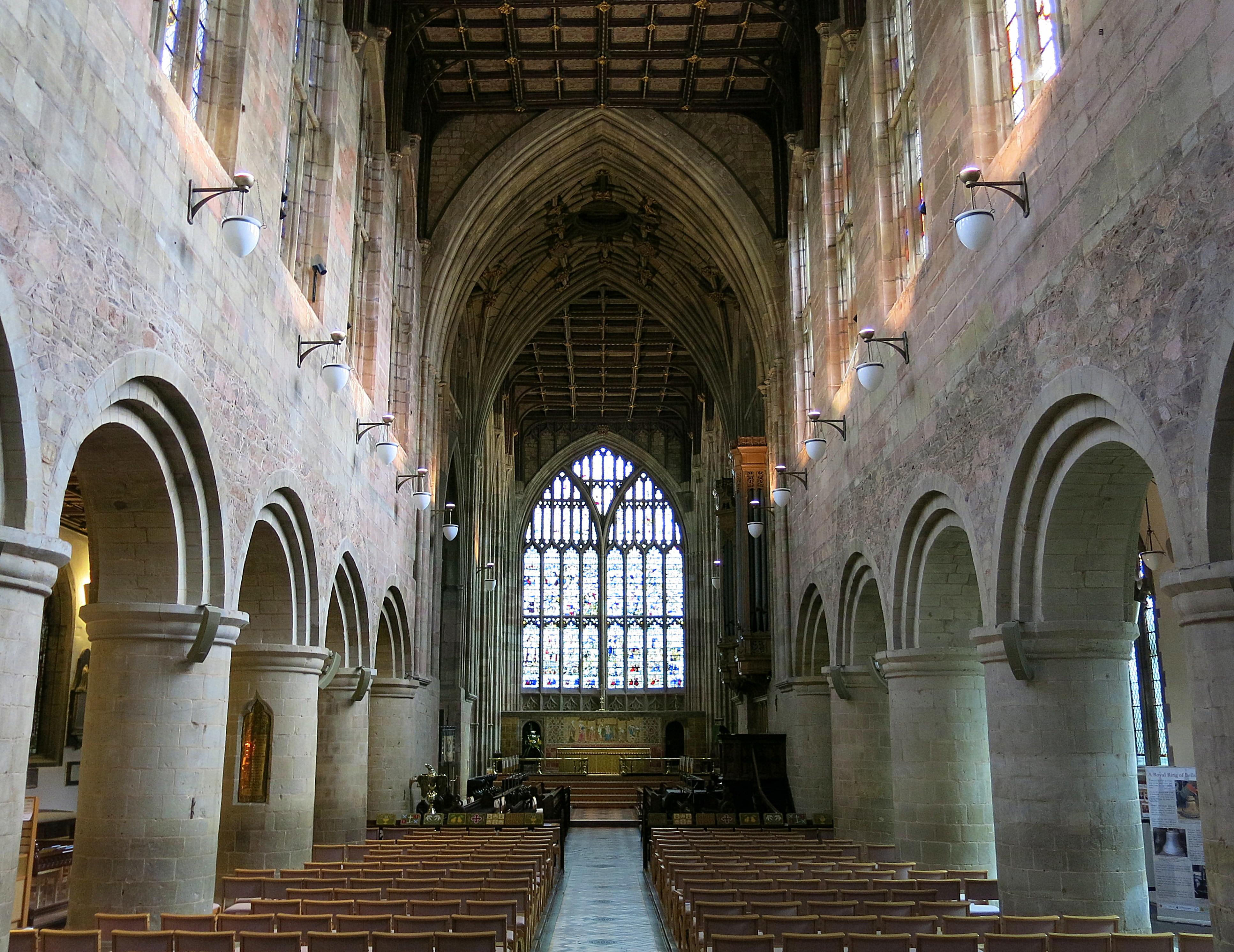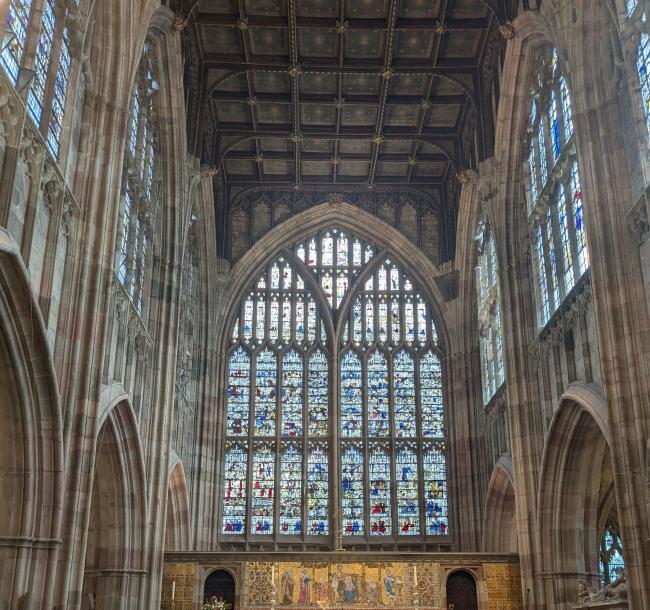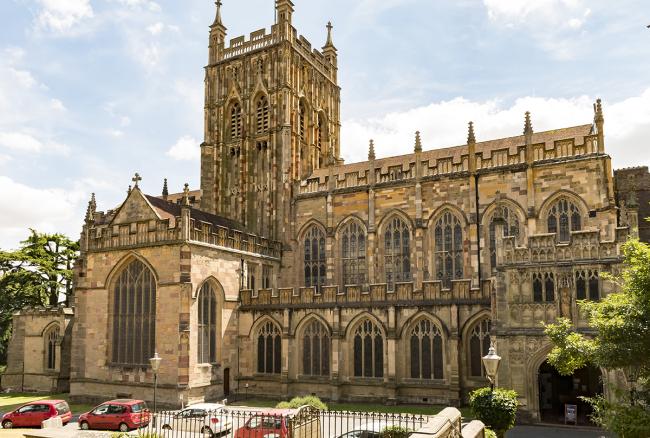
Danger zones revealed: Heritage at Risk Register
Every year in England, Historic England update and publish their Heritage at Risk Register, showing which listed buildings across the country have fallen into disrepair. The National Churches Trust analyses this data and provides a breakdown of places of worship that are at risk – drawing national attention to these beautiful buildings, to help them to be saved.
What does the 2025 data tell us about churches at risk?
Historic England’s Heritage at Risk Register shows that there are now almost 1,000 churches, chapels, meeting houses and cathedrals at risk.
- 976 churches, chapels, meeting houses and cathedrals on Historic England’s Heritage at Risk Register
- 985 places of worship on the Heritage at Risk Register (this includes synagogues and mosques)
- Only 37 places of worship removed from this year’s register
- And 57 have been added this year
“There is no second chance to rescue them”
An analysis of Historic England's latest Heritage at Risk Register, carried out by the National Churches Trust, shows that Shropshire, the East Midlands, Devon, Cornwall, Herefordshire, Norfolk and parts of inner and central London contain the greatest number of places of worship on the Heritage at Risk Register.
The buildings are of historic or architectural significance, with many of the churches being hundreds of years old and containing beautiful stained glass, monuments and woodwork.
339 MPs, more than 60 per cent of all the MPs in England, have a place of worship on the Historic England ‘Heritage at Risk’ Register in their constituency. They include the leaders of the main political parties including Sir Keir Starmer (10), Kemi Badenoch (3) and Ed Davey (1).
Every political party has multiple buildings at risk too. Labour (486), Conservative (316), Liberal Democrats (123), Independent MPs (31), Greens (19) and Reform (11).
“These statistics should be an alarm bell for the Government – now is the moment to act to save these important buildings before they fall even more into disrepair. Once these buildings are gone, they are gone forever. There is no second chance to rescue them,” says Sir Philip Rutnam, Chair of the National Churches Trust.
“The fact that all the political parties have numerous buildings at risk in their constituencies shows that this is a cross-party issue – something they can unite on.”
Cuts to lifeline VAT reclaim scheme for listed churches are having a devastating impact on churches on the Heritage at Risk Register
The Listed Places of Worship Grants Scheme, set up in 2001 and renewed by every subsequent Government, formerly enabled all listed places of worship to reclaim their VAT costs on urgent repairs.
But this year, the Government introduced a cap of £25,000 per church, meaning that many churches can no longer reclaim the full cost of VAT on their repair works. Projects are now up to twenty percent more expensive for listed buildings, and it is local people who will shoulder the cost of this increase.
The scheme has only been extended to April 2026, and no indication has been made by The Department for Culture, Media and Sport as to whether it will be renewed. Churches are anxious about what will happen.
“The changes to the Listed Places of Worship Grants Scheme have been a disaster for church buildings,” says Sir Philip Rutnam, Chair of the National Churches Trust
“Churches across the country have been in touch with us to explain how hard the changes have hit them. Many projects have been put on hold or cut down significantly as churches struggle to find extra money to pay VAT and worry about the uncertainty of the scheme's future."
"Places of worship on the Heritage at Risk Register need to make these repairs to ensure the future of these buildings. Penalising them – taking away VAT relief – for carrying out work so that these buildings can survive and continue to help their local communities is extremely short-sighted.”
“For every £1 that is invested in a church building, £16 of social good is generated. Churches are the hidden safety net in the UK today, providing services that would cost the NHS £8.4 billion to deliver. A church cannot host a warm space, a parent and toddler group, a food bank or mental health support if their building is crumbling and leaking.”
“Now is the time to act – for the future of church buildings in the UK and for the community good they do. The Department for Culture, Media and Sport must renew the Listed Places of Worship Grants Scheme permanently and remove its devastating cap. Failure to do so will see even more places of worship added to the Register.”
Please help to save the Listed Places of Worship Grants Scheme
This scheme is such a lifeline for churches – please help them by contacting you MP and urge them to save the scheme. We have lots of resources to help you to do this.
Urgent: medieval stained glass now at risk

Great Malvern Priory, a Grade I listed church, which was founded in 1085 – offering consistent worship for over 940 years – is a major Worcestershire landmark. It welcomes 40,000 visitors a year. But it is on the Historic England Heritage at Risk Register due to the deteriorating condition of its medieval stained glass and high-level masonry. Urgent works are required to:
- Conserve and protect eight of fourteen at-risk medieval stained-glass windows, which are regarded as the finest collection of English 15th and early 16th century stained glass outside York Minster, through restoration and installation of Environmental Protective Glazing,
- Repair failing high-level stonework on the tower and south façade to ensure structural stability,
- Address accessibility and safety issues, including uneven floors, trip hazards from pew plinths, and inadequate access for people with mobility impairments,
- Modernise inadequate visitor facilities, currently housed in temporary wooden structures within the nave, which obstruct access and sightlines,
- Upgrade energy efficiency by introducing air-source heat pumps and improved draught-proofing to meet the Church of England’s net zero carbon commitment by 2030.
All of this is estimated to cost around £12 million. Without these repairs, the building’s fabric and unique stained glass remain at risk of irreversible loss.
How the changes to the Listed Places of Worship Grants Scheme have affected Great Malvern Priory:
Great Malvern Priory have estimated in their business plan that their VAT costs will be around £2 million. With the scheme projected to end in April 2026, they have had to assume that none of this will be reclaimable. By using The House of Good: Local calculator, created by the National Churches Trust, they have found that they host or run community activities and support that have an economic value of £2 million – showing how invaluable the church is to local people. The church will have to pay £2 million in VAT costs even though it is saving the state and the NHS a huge amount of money by supporting the community in this way.
“This change has reduced the scope and pace of proposed works and increased reliance on external funders, diverting charitable income that would otherwise more directly support charitable activities. Some grant givers feel unable to contribute towards paying tax," shares Revd Dr Roger Latham, Vicar at Great Malvern Priory.
“Restoration of the Listed Places of Worship Grants Scheme to its original uncapped form would directly enable the safeguarding of nationally significant heritage while ensuring public donations and charitable grants are used fully for the works themselves, not additional tax liabilities.
“Being able to rely on government support through schemes such as the Listed Places of Worship Grants Scheme ensures not only the conservation of an irreplaceable national treasure, but also the continuation of a living, welcoming centre for worship, community, and culture for generations to come.”

St Mary has pay £130,000 in VAT costs that it could have spent on work to take it off the Heritage at Risk Register

Part of the Totnes landscape for more than 500 years, Grade I listed St Mary the Virgin is open from dawn until dusk every day and attracts 50,000 visitors a year, from people wanting to enjoy its heritage or watch a concert to those seeking somewhere quiet to reflect and pray.
It is on Historic England’s Heritage at Risk Register – listed as “poor” and facing “slow decay”. Through extensive local fundraising and grants from The National Lottery Heritage Fund, the National Churches Trust and many others, the church had secured £1.44 million to pay for urgent repairs and a facilities upgrade.
But a cap of £25,000 was imposed on the Listed Places of Worship Grant Scheme and the church was left with a shortfall of £130,000 VAT costs it now has to find.
“This was a big knock for us. The project has been over 15 years in the planning and has already been through major restructuring,” explains Father Jim Barlow, Rector at St Mary.
“Given that we have already been supported by nearly all the major funders for church heritage projects, it has been a real struggle to find these extra funds. This is really disheartening for those who have worked so hard and for the local community.
“The extra funds we have raised could have been used to do more works on the building to help take it off the At Risk Register, so for the sake of VAT a significant investment in the local heritage fabric has been reduced.”
Church repairs are often planned over many years, partly because of the need to fundraise locally to pay for the costs. Consistency is key, so that churches can plan for the future, and keep their buildings in good repair.

Please help to save the Listed Places of Worship Grants Scheme
This scheme is such a lifeline for churches – please help them by contacting you MP and urge them to save the scheme. We have lots of resources to help you to do this.
Heritage at risk registers in each of the four nations
Heritage at risk registers can be very useful in drawing attention to church buildings and the challenges that local communities face in funding and maintaining them. Individual churches may benefit from going on a register as it can help with fundraising for repairs – some grant providers, for example prioritise urgency of repairs in their scoring criteria, which their inclusion on a register may help with.
Public registers can also be helpful for funders and policymakers to look at the bigger picture of what is happening across the country. Our Heritage at Risk constituency map helpfully lays out where the 'danger zones' are in England, which could help target funding where it is needed most.
Our data is from Historic England, who do a brilliant job in ensuring their Heritage at Risk Register is updated every year and is open to the public, so that everyone can benefit from their data.
The National Churches Trust would like to see comparable registers in each of the UK's four nations. We believe the benefits of doing this will help churches in need receive support, bring greater attention to the crisis facing church buildings and help the heritage sector, the devolved governments and the UK Government to better respond to the needs facing church buildings and the communities who rely on them.
